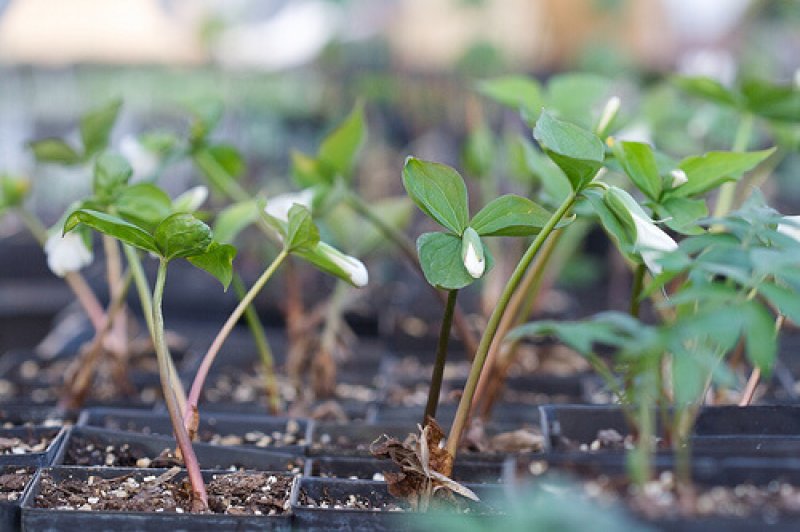The following is excerpted from The Infinite Resource: The Power of Ideas on a Finite Planet by Ramez Naam.
In this second of the GLP’s exclusive two-part series, Ramez Naam examines the accomplishments of the agricultural biotechnology revolution to date: has the promise been oversold, as some of its critics contend? That leads to one of his most thoughtful essays: why are so many otherwise progressive thinkers so resistant to technologically based changes? View part I here.
* * *
The Effect So far
The few genetically engineered crops we’ve deployed so far are already proving themselves to be environmental wins. Roundup Ready soybeans, corn, cotton, and other variants are crops that have been engineered to be resistant to the plant-killing qualities of the herbicide glyphosate (sold as Roundup). They’re widely decried because they encourage farmers to spray their crops with glyphosate, since farmers can now do so in larger amounts, killing off weeds, but leaving their crops intact. And it’s true that glyphosate usage has gone up. But glyphosate is incredibly safe compared to previous generations of herbicides. Despite hundreds of studies, no sign of toxicity from eating foods sprayed with glyphosate has ever been found. And in the ground, glyphosate binds to soil particles, meaning that very little of it winds up groundwater.
The result has been that, while Roundup Ready crops have increased the use of glyphosate, measurements of agricultural runoffs in the Midwest show lower levels of herbicides in general than at any point in the last 20 years. And the decline in some of the most dangerous herbicides, those that can enter drinking water, has been the most impressive. Midwestern river concentrations of the water-contaminating herbicide alachlor, for example, dropped by a factor of around 30 over the course of the 1990s. Concentrations of atrazine, another herbicide far more dangerous than glyphosate, have also plummeted. All told, on soybean farms, the use of other herbicides, which the National Research Council call “more toxic than glyphosate” has dropped by a factor of 10 since the mid 1990s. On cotton farms, which are also heavily planted with Roundup Ready crops, use of more toxic herbicides has dropped by a factor of 3. They’ve dropped by around half on cornfields.
Glyphosate also helps encourage the use of conservation tillage and no-till techniques that are more environmentally friendly. On most farms, a tractor will make 5 passes – one to plant the seeds, one to harvest the grain, and three after the harvest to destroy weeds. Those passes use fuel. They release carbon trapped in the soil into the atmosphere, contributing to global warming. And they accelerate evaporation from the soil, meaning that more water must be used in irrigation. Because heavily tilled soils form a crust on top, that additional irrigation also produces more runoffs that enter rivers, lakes, and oceans. Broad -spectrum herbicides like glyphosate eliminate the need for the passes that destroy weeds, encouraging no-till techniques that require only two tractor passes. As a result, the farm uses less energy, releases less carbon, uses less water, and produces less runoffs.
On top of that, in the United States, genetically modified crops such as Bt corn, which resists insect pests like corn earworm, have made it possible for farmers to spray less. As a result, over the last 13 years, the amount of insecticide applied per acre of corn and cotton in the United States has dropped by a factor of 5.
By improving resistance to weeds and insects, Bt crops have also increased yields. The National Research Council of the National Academies in 2010, after reviewing 15 years of studies, found that GM crops in the United States had lifted yields of corn by 5-10% and yields of cotton by as much as 20%.
In the developing world, where pesticides are more expensive and agriculture is less mechanized (making it more labor-intensive to spread pesticides over the fields), the difference is even larger.
In India, for example, before 2002, infestations of bollworm regularly destroyed half the cotton crop. K.R. Kranthi, director of India’s Central Institute for Cotton Research, tells a compelling story about how farmers viewed GM crops in those days. In 2001, he says, farmers endured incredible 118 degree heat to make the trek to a cotton seed testing facility at his institute in the city of Nagpur. Kranthi recalls meeting a group who’d traveled 800 miles from the Gujarat region, bringing with them sealed aluminum pouches with cotton seeds. What they all wanted to know was – were these seeds genetically modified to contain the Bt gene?
Kranthi writes, “By end of that day, when they saw the results, they were all smiles and suddenly looked well-fed, despite having eaten just a banana and samosa that day. All of the seed packets tested positive for the presence of the Bt toxin.” That is to say, all the seeds had been genetically engineered. That was one year before India approved Bt cotton for use in the country. The farmers didn’t care. They just wanted to produce viable crops.
Since its introduction to India, Bt cotton has doubled cotton yields per acre, and cut the use of insecticides by half. The most dangerous insecticides have fallen in use by 70%. Writing in 2011 in the journal Ecological Economics, German researchers estimated that by reducing the use of toxic insecticides in India, where cotton is harvested by hand, Bt cotton was preventing an estimated 2.4 million cases of insecticide poisoning per year.
What’s the Resistance
So GM crops have already reduced insecticide usage, reduced insecticide poisoning, encouraged soil conservation, reduced usage of the most dangerous herbicides like atrazine, reduced pollution of drinking water with herbicides, increased profits for developing world farmers trying to pull themselves out of poverty, and moderately increased yields.
And GM crops of the future could save hundreds of thousands of lives a year (in the very near future), could boost yield per acre dramatically, could feed the planet, could boost nutrition, could reduce the use of synthetic fertilizer, and could save millions of square miles of forest from being turned into farm land.
And GMOs are safe. After 15 years of research, hundreds of studies, and hundreds of billions of meal containing GMOs, there is no credible evidence of harm to humans or animals. The most widely cited studies that purport to show harm to rats fed Monsanto Bt corn (in the form of toxicity and slightly enlarged livers) were conducted by a single laboratory, that of Gilles-Eric Séralini. But those results have not withstood scrutiny. Multiple panels that have reviewed the data, including scientists from France, Germany, Canada, the US, Australia, and New Zealand have come to the conclusion that the Monsanto corn posed no additional risk.
In 2008, a report authored by Alberta Velimirov and Jürgen Zentek at the Free University of Berlin made waves when it purported to show that mice strains fed another variety of GMO corn for 4 generations shows signs of reduced fertility. But in 2009, the Austrian government, which had commissioned the study, announced that due to calculation errors and problems with the experiment itself, the study had been withdrawn, and that the results were invalid. As always, bad news travels faster than good. In November 2008, Greenpeace issued a press release pointing to Zentek’s study as demonstrating the dangers of GMOs. They made no comment on the retraction of the study’s findings.
While the few studies pointing to any risk to animals have been retracted or shot down, no paper showing harm to humans has ever been published. Conversely, a number of large studies and reviews of the hundreds of smaller studies have found no health impact to humans. In 2004, a report from the US National Academy of Sciences said that “To date, no adverse health effects attributed to genetic engineering have been documented in the human population.”
In 2008, a review published in the Journal of the Royal Society of Medicine found that there were no credible claims of health damage from GMOs, stating, “Foods derived from GM crops have been consumed by hundreds of millions of people across the world for more than 15 years, with no reported ill effects (or legal cases related to human health), despite many of the consumers coming from that most litigious of countries, the USA.”
Despite the strong scientific consensus on the safety and environmental benefits of GMOs, resistance continues. The real reason so many people fear genetically modified organisms, I suspect, has little to do with rational assessment of the data, and everything to do with our hardwired emotional responses. Humans (and other animals) have evolved a high disgust instinct. That instinct may have evolved to protect us from disease. We’re instinctively disgusted by blood, by bodily waste, by rotting food, by the stench of death. All of those, for our ancestors, were potential threats to survival. Any of them could have carried a contagious disease. In the days before antibiotics and other modern medicines, that could be fatal. The disgust mechanism drove early opposition to vaccination, to blood transfusions, and to other medical technologies that seemed ‘gross.’ The smallpox vaccine, blood transfusions, organ transplants, and fertility treatments all suffered from this early on. All are now accepted in society.
Genetic modification of plants and animals, something few people truly understand, seems alien in many of the same ways. It’s a tinkering with our food, not in a mechanical sense, but in some mysterious biological sense.
I believe opponents of genetically modified foods are doing what they’re doing out of the best of intentions. I think their judgments are driven by a highly selective sort of caution, however. As we look at the facts, look at the potential gains, the real gains already achieved, and the way that losses and harms seem to recede into the distance as we investigate them, using genetic technology to improve our farming seems more and more attractive.
And perhaps – as with vaccines, transfusions, organ transplants, and in-vitro fertilization – GMOs will seem less alien and unnatural as time goes by, and more and more of society will accept them.
We should hope so.
Will genetic technologies fix all the problems of agriculture by themselves? Absolutely not. We need policies to discourage the externalities of agriculture, just as we need them to discourage the externalities of burning fossil fuels. We should be adopting rules that encourage crop diversity, discourage nitrogen and pesticide runoffs, and encourage the practices that slow pesticide resistance. All of those are places where intelligent policy choices can help. But in the context of those policy improvements, GMOs can play a vital role in actually achieving those goals of greater diversity, lower pesticide resistance, and reduced runoff. GMOs aren’t the whole of the solution to agriculture’s problems, but they’re a key piece.
About the Author
 Ramez Naam is a computer scientist who spent 13 years at Microsoft. He’s also the award-winning author of three books. His latest, The Infinite Resource: The Power of Ideas on a Finite Planet charts a course to innovate to overcome the very real challenges of climate change, finite fossil fuels, fresh water depletion, feeding the world, and a host of other natural resource and environmental threats facing us.
Ramez Naam is a computer scientist who spent 13 years at Microsoft. He’s also the award-winning author of three books. His latest, The Infinite Resource: The Power of Ideas on a Finite Planet charts a course to innovate to overcome the very real challenges of climate change, finite fossil fuels, fresh water depletion, feeding the world, and a host of other natural resource and environmental threats facing us.































